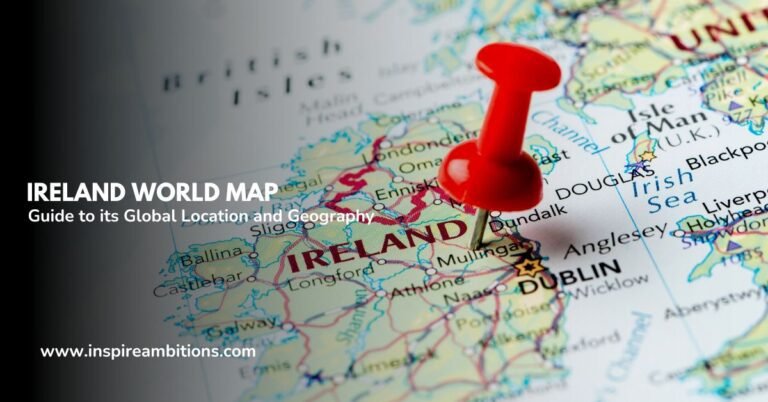What Language is Spoken in Ireland – Unveiling the Linguistic Landscape
When you think of Ireland, the lush green countryside and historic landmarks likely come to mind, but the languages of Ireland are a key part of its cultural heritage.
English is the primary language spoken across the country, dominating everyday life, education, business, and media. It is the most widely used means of communication, making it the language most visitors will encounter.
However, Ireland also proudly holds onto its linguistic roots through the Irish language, or Gaeilge. As a native Celtic language, Gaeilge is deeply woven into Ireland’s history and identity. It holds constitutional recognition as the national and first official language of the Republic of Ireland, reflecting its importance to the country’s cultural framework.
Despite this status, Irish is spoken fluently by a smaller proportion of the population. It thrives primarily in designated Gaeltacht regions, where efforts are made to preserve and promote its use.
These areas, found mainly along the western coast, serve as hubs for Irish language education and cultural preservation. In recent years, there has been renewed interest in learning and using Irish, with the language appearing more frequently in schools, road signs, and even social media, fostering a revival of this rich linguistic heritage.
Alongside English and Irish, Ireland’s linguistic landscape includes other influences due to immigration, with languages such as Polish, Lithuanian, and Romanian being spoken within immigrant communities. Irish Sign Language also holds official recognition, further highlighting the country’s commitment to embracing its diverse linguistic identity.
Additionally, Ireland’s linguistic landscape is enriched by a diverse set of languages brought by its multicultural inhabitants. Languages like Polish, Romanian, and Lithuanian have become increasingly prevalent due to immigration, with Polish being the most widely spoken foreign language in Ireland.
Apart from spoken languages, Ireland recognizes Irish Sign Language (ISL), which is used by the deaf community in the Republic of Ireland and shares similarities with French Sign Language.
In Northern Ireland, which is part of the United Kingdom, both British Sign Language (BSL) and ISL are used. The interaction among these languages reflects the complex linguistic tapestry that contributes to Ireland’s rich cultural heritage.
Languages of Ireland
Ireland, known for its rich héritage culturel, boasts a linguistic landscape that is vibrant and diverse. At the core of this tapestry are two official languages, Irish and English, complemented by a multitude of languages brought by immigrants.
Irish Language
Irish, or Gaeilge, holds a unique status as both the national language et first official language of Ireland. Rooted in the Celtic language family, it has profoundly influenced Irish literature and cultural identity, reinforced by movements like the Gaelic Revival.
Key Features of the Irish Language:
- Gaeltacht Regions: These areas are dedicated to preserving the Irish language, where it is actively spoken and culturally cherished.
- Dialects: Irish has three primary dialects—Munster, Connacht, et Ulster—each reflecting distinct regional characteristics.
- Usage: Alors que English is more prevalent, Irish is used in schools, government proceedings, and cultural expressions.
English Language
Anglais serves as Ireland’s second official language and is the lingua franca for most of the population. However, it is uniquely flavored by Hiberno-English, a dialect influenced by Irish grammar and vocabulary.
Key Features of English in Ireland:
- Primary Communication: English dominates in both urban and rural areas, making it the main language for daily life, media, and education.
- Influence of Irish: Words and syntax from Gaeilge have enriched English vocabulary, creating a distinctive Irish version of the language.
Minority and Immigrant Languages
Ireland’s multicultural society brings a diverse array of languages. The most commonly spoken immigrant languages include Polish, Lithuanian, Français, German, Espagnol, et Romanian.
Additional Contributions to Linguistic Diversity:
- Sign Language: Irish Sign Language (ISL) is the main form of communication within Ireland’s Deaf community. It shares some similarities with French Sign Language.
- Growing Communities: Languages like Russian, Chinois, arabe, et Tagalog reflect Ireland’s changing demographics and global connections.
Cultural Significance and Language Revival
Ireland’s linguistic identity is defined by the enduring importance of Irish (Gaeilge) and the effort to preserve it. This cultural connection underscores national pride and a shared heritage.
Historical Overview of Irish:
- Part of the Goidelic branch of Celtic languages, along with Gaélique écossais et Manx, Irish was the dominant language in Ireland until the 19th century.
- Le Ogham script, an ancient writing system, showcases the historical significance of Irish.
- The decline of Irish resulted from historical events like British rule, with English becoming the primary language.
Modern Revival Efforts:
- Le Gaelic Revival of the late 19th century reignited interest in Irish. The Gaelic League played a critical role in promoting the language in éducation, public life, et médias.
- Gaeltacht regions are vital for sustaining Irish as a community language. Today, digital platforms et médias play a significant role in Irish-language revitalization.
Language and Irish Identity
Language is central to Ireland’s national identity. For Irish people, Gaeilge is more than a means of communication; it symbolizes their patrimoine, culture, and resilience. Despite challenges, Irish remains a cornerstone of Ireland’s unique character within the Celtic world, fostering a deep connection to its past and inspiring its future.






